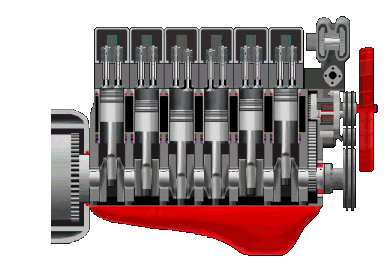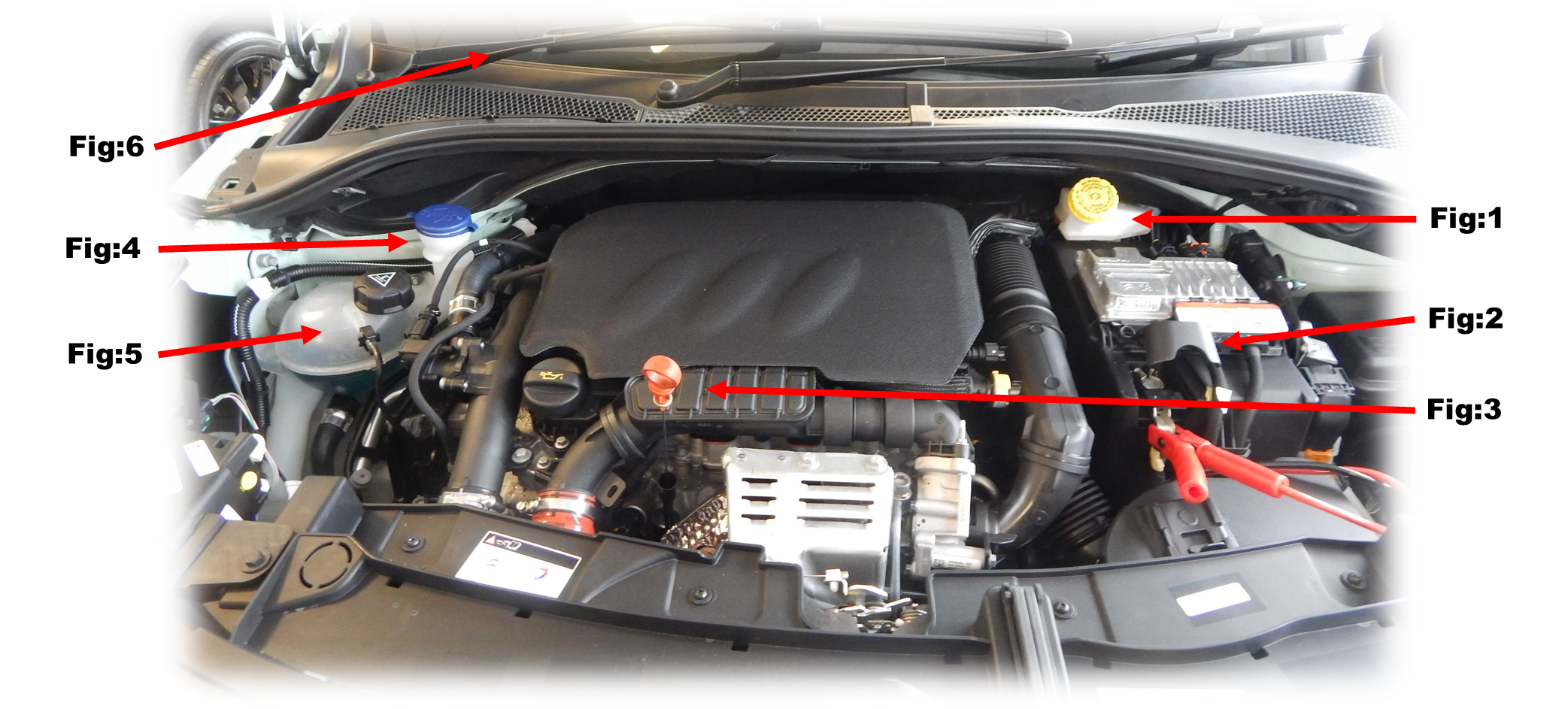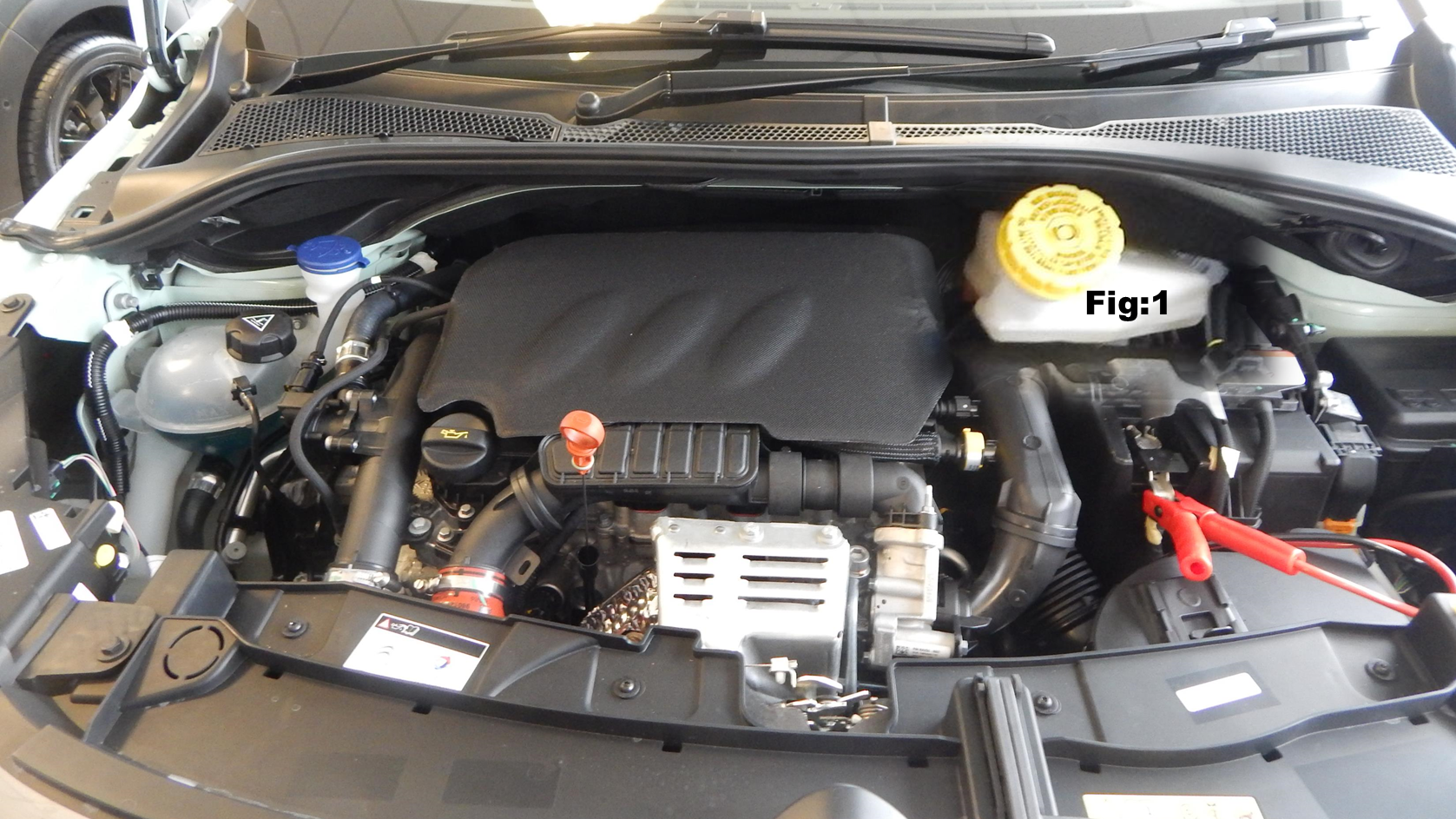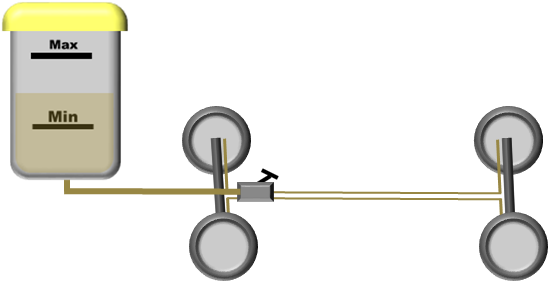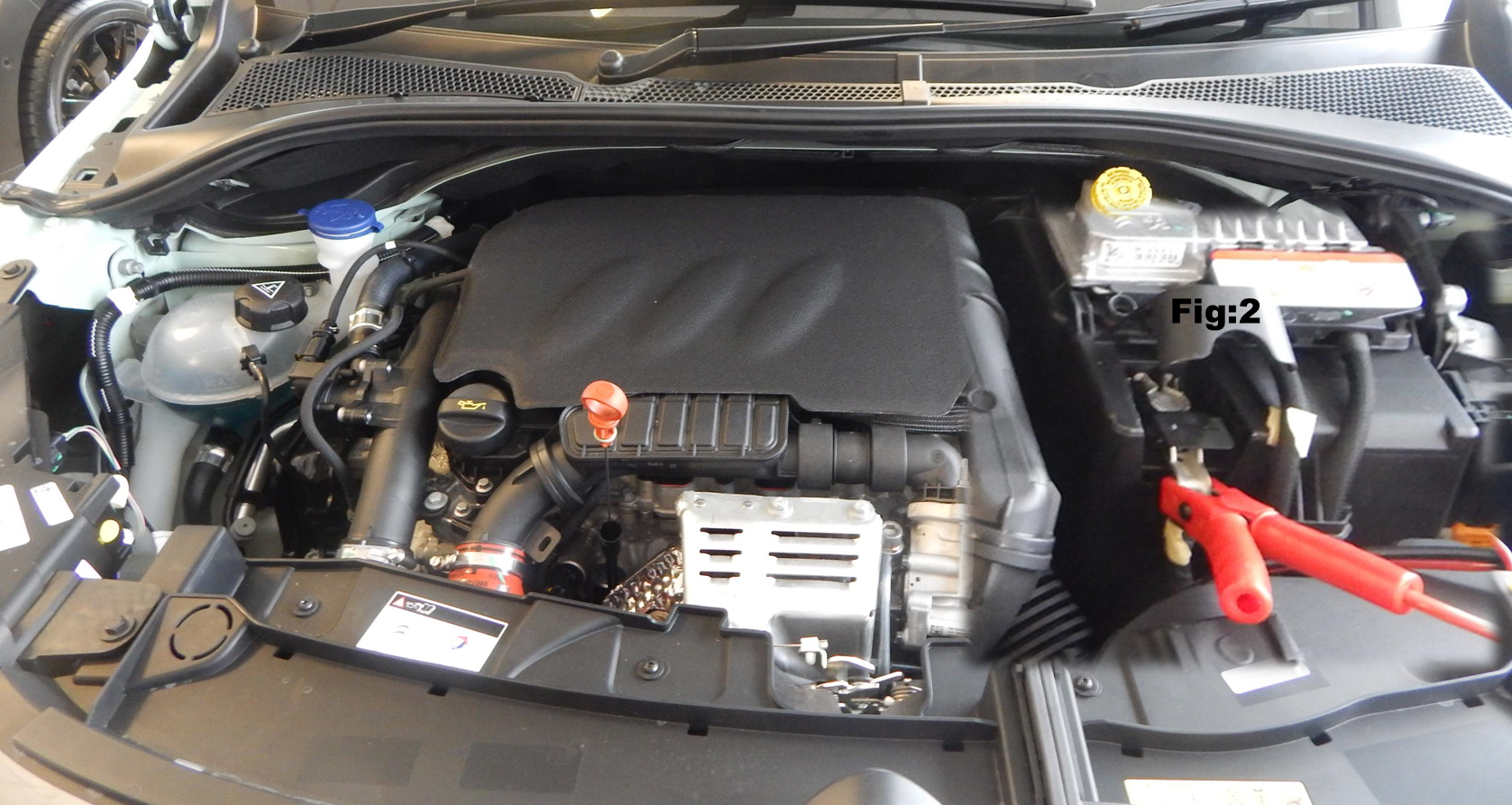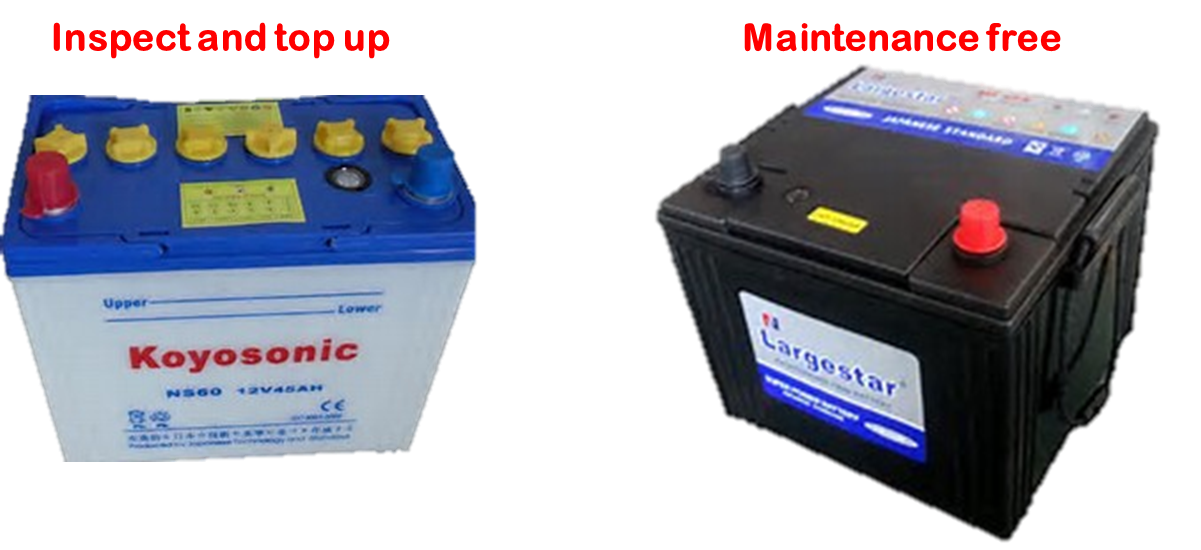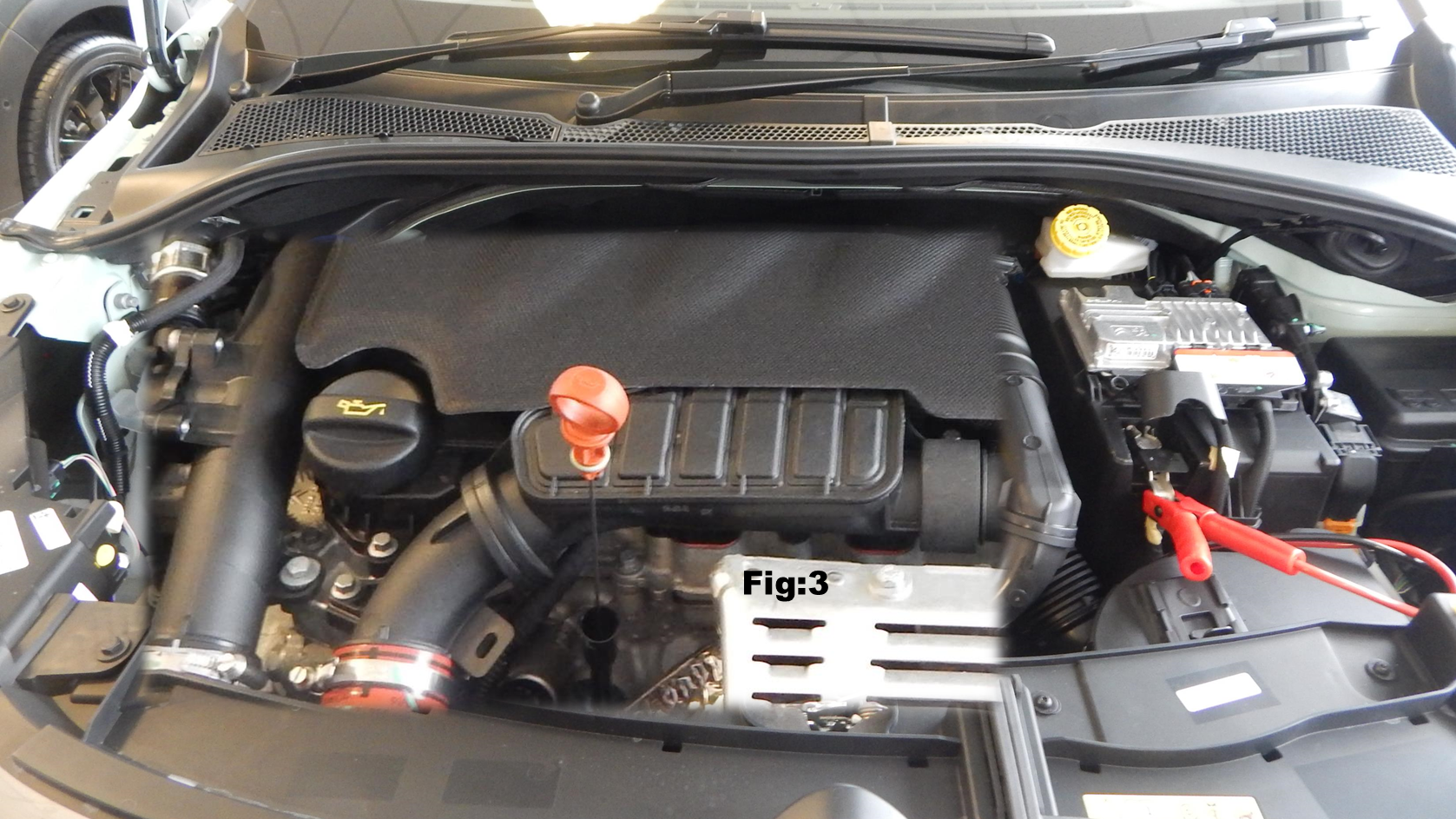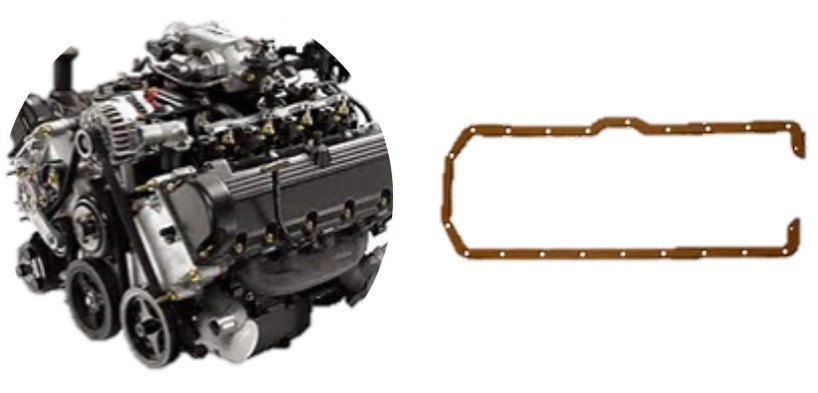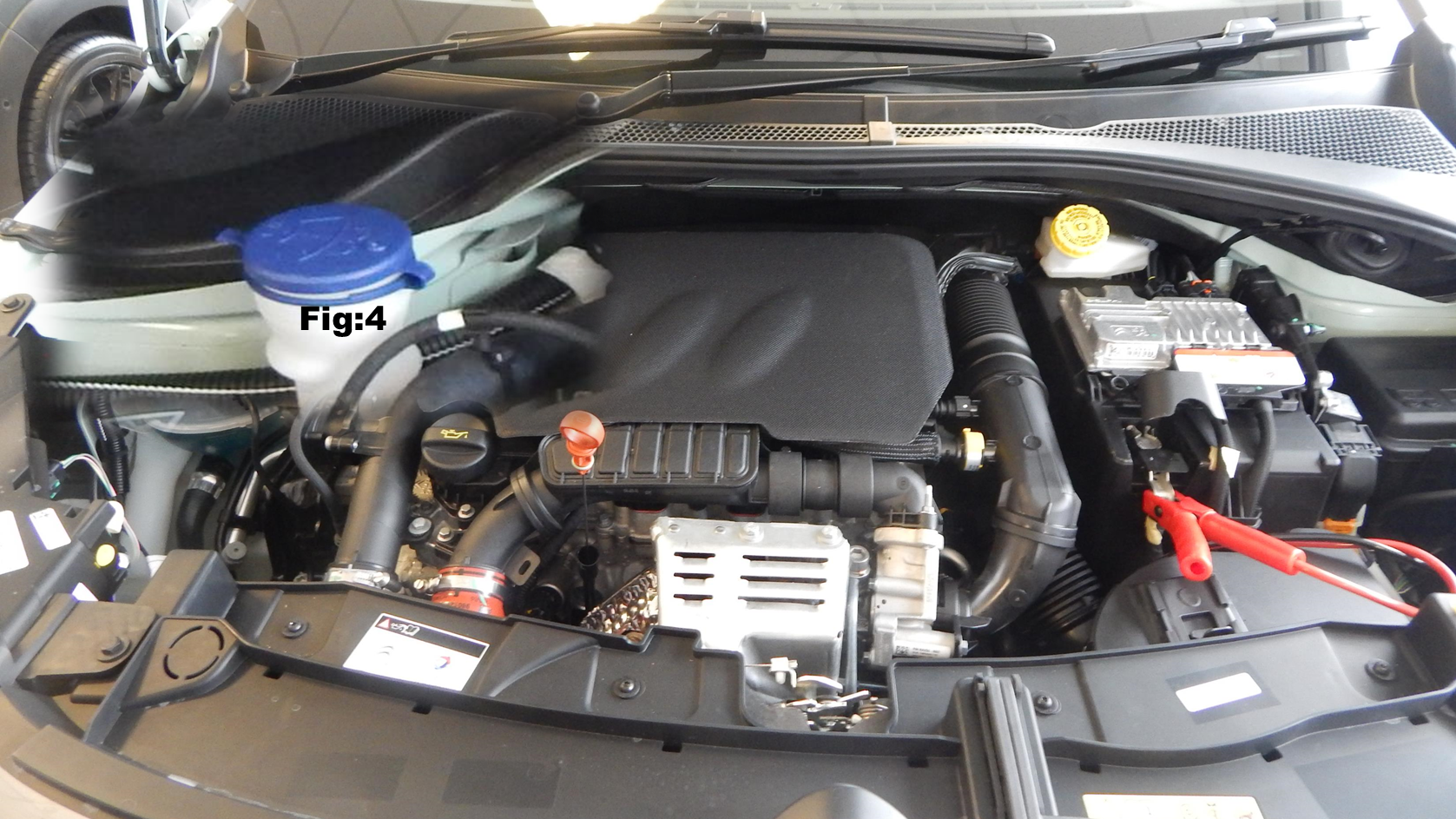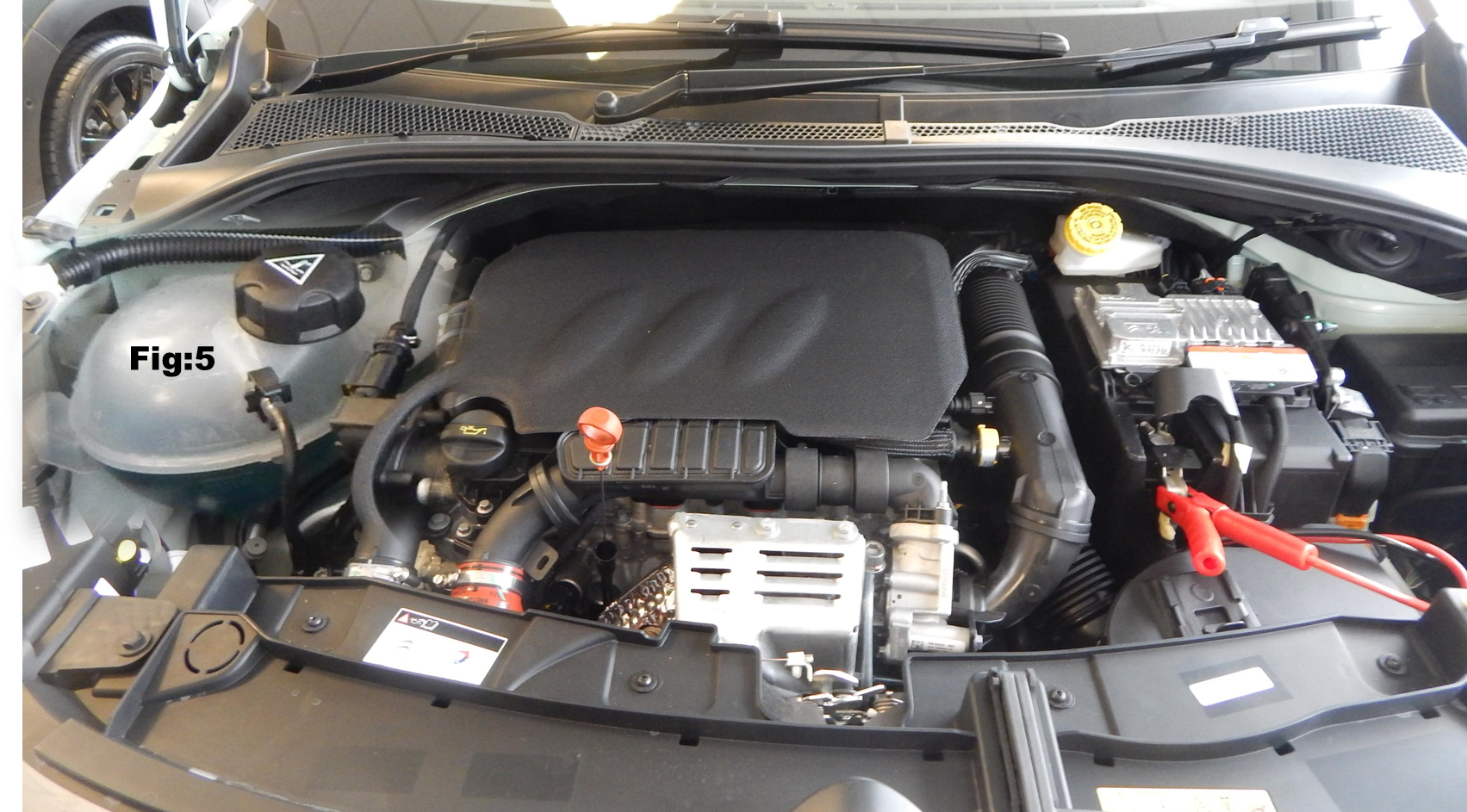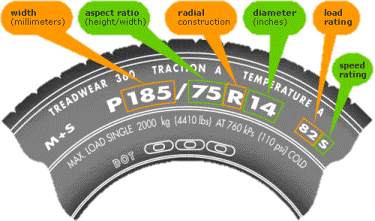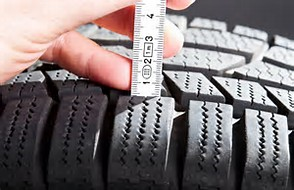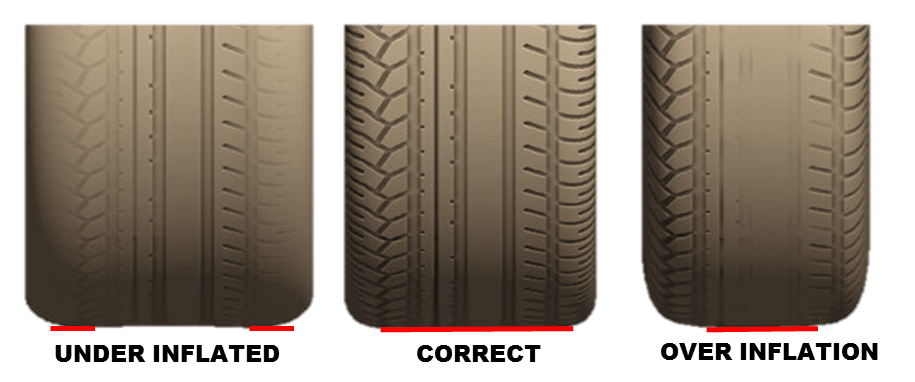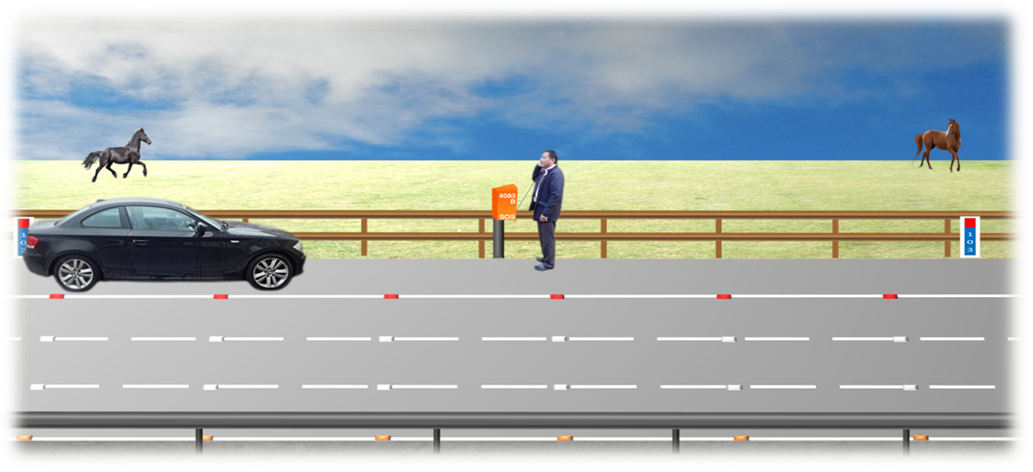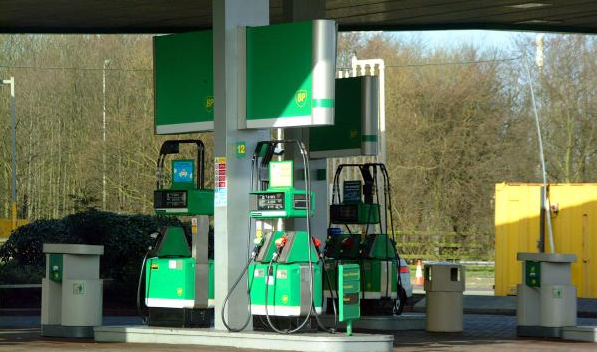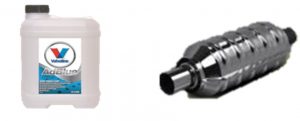YOUR VEHICLE
This section covers your vehicle and the maintenance that you are responsible for to keep your vehicle roadworthy and legal. Whether you are aspiring to own a super car or a little run around, the basics of general maintenance are the same. Complacency can result in your car breaking down or becoming illegal to use on the public highway. Either way it will hurt your pocket. You must get to know your vehicle.
THE ENGINE
The Fig reference points in the picture below are all part of everyday maintenance that you should carry out on a regular basis. Simple regular checks will result in greater reliability and reduced annual costs for you. All the points are explained, the explanations cover the questions that you will find on your theory test. You will also be asked certain question relevant to this section on your practical test.
Fig: 1 Brake Fluid. Fig: 2 Battery. Fig: 3 Oil. Fig:4 Windscreen wash. Fig:5 Coolant. Fig:6 Wiper blades
FIG 1: BRAKE FLUID
All cars have braking systems, the systems are filled with brake fluid. The system comprises of a main reservoir, brake pipes, cylinders, foot-brake and brake pads. Initially the system is full, but as your brake pads wear down over a period of time you will require more fluid in the system to activate the brakes correctly.
This fluid is provided by the reservoir. If you allow the fluid to drop below the minimum level, you are at great risk of drawing air into the brake system.
The danger is air can be compressed and will prevent your brakes activating correctly. The remedy for this is very expensive. A qualified technician must bleed your braking system to remove the air. Until this has been done you and third parties are at serious risk of injury should you have an accident.
Always make sure your brake fluid reservoir is filled to the maximum guide line. Do not overfill.
If your fluid level keeps dropping you might have a leak. After your vehicle has been stationary for a while drive it forward, you will possibly see oil patches on the ground indicating where on your vehicle the leak is. If you can’t sort out the leak then take it to a garage.
In addition most modern day vehicles are fitted with an Anti-lock Braking systems (ABS).
The picture on the above shows the light that will be displayed on your dashboard. The light should go out shortly after the engine has started. If the light stays on or comes on during a journey, seek professional advice.
An anti-lock braking system or anti-skid braking system (ABS) is an auto-mobile safety system that allows the wheels on a motor vehicle to maintain tractive contact with the road surface. Sensors react to prevent the wheels locking up which in turn allows the driver to maintain steering control band avoiding uncontrolled skidding.
The ABS allows you to steer and brake at the same time, but do not rely on this system. Always brake gently and in good time. The ABS is least effective in bad weather and on poor or loose road surfaces.
FIG 2: The Battery
All motor vehicles require a lead acid battery for power. New batteries are sealed for life but older batteries have individual inspection caps that require regular servicing by you. Batteries in all cases contain sulphuric acid so when removing the caps be careful. When inspecting the battery you will see lead plates, the fluid should be just above the plates. If you need to top up you must use only distilled water. You must repeat this process on all the cells.
All new batteries are sealed and cannot be inspected or topped up. In all cases if your battery becomes flat and it will not recharge then more than likely it will need replacing. Because your old battery contains sulphuric acid it must be disposed of carefully. You must take it to a local garage or council site for disposal.
A battery is used initially to start the vehicle, once the vehicle is running the vehicle charging system (alternator) will take over. The alternator will replace the power that the battery has used to start the vehicle and will run all the electrical components on the vehicle until the engine is turned off.
Remember that constantly using the radio or lights without the engine running will drain your battery. Parked up with your engine running listening to music will also damage the environment. Not all batteries are in the engine compartment, with some cars they can be located in the luggage compartment (boot).
FIG:3 OIL
The lubrication system is one of the most important systems on your vehicle. Failure to check and if necessary top up the oil will result in serious damage to your engine. Oil and oil filters must also be completely replaced at certain times as they lose the ability to protect your engine.
If you look at the picture above, fig:3 shows the position of the oil dipstick. In this picture it has been partially withdraw from its housing. To the left of the dipstick you can see the oil filler cap. This would need to be removed if the oil level is below the recommended level.
Below there is a graphic of a typical oil dipstick, when fully removed you will see two lines, one for minimum and one for maximum oil levels. It is important to make sure that the oil level is between the two marks. If you need to add oil do so by adding a small amount at a time to avoiding overfilling. The oil level should be checked whilst the engine is cold.
You must always make sure that your vehicle is on level ground so that you get a correct reading.
Always wipe the dipstick with a cloth then re-dip. The first reading may not be accurate because of oil trapped in the dipstick tube.
No matter how complicated the engine looks it is still made up of only three sections, the three sections are sandwiched together by using seals and gaskets. The oil is stored in the bottom section called the sump and is distributed throughout the engine via the oil pump. The oil is pumped through galleries and capillaries to all the working parts of the engine. The problem with this system is that if a gasket or seal breaks, oil and water from the cooling system can contaminate each other.
Overfilling the oil can cause the gaskets and seals to split. Under-filling can result in the working components not being lubricated causing the engine to seize.
FIG: 4 WINDSCREEN WASH
Throughout the year windscreen wash fluid is important. In the winter salt is thrown up off our roads causing your windscreen to become dirty every time you pass a vehicle or a vehicle passes you. But it’s not just the winter that causes this problem, heavy rain can have the same effect. Adding a windscreen solution (screen wash) to the water reservoir can help immensely.
Screen wash has a mild antifreeze added, this is most beneficial during the winter months, using just water is not sufficient as the water can freeze in the tubes and jets that deliver it to your windows. Screen wash also contains a de-greaser, in the summer months it is very good at removing the smears left by insects that have committed suicide on your windscreen.
In addition to this when the sun is low it can be dangerous, if you have not got a clean windscreen the sun can momentarily blind you. Ideally you should buy screen wash that can be diluted as it works out a lot cheaper, you should always make sure that it is topped up. If you own a hatch back it is also important to provide enough to clear the rear window. Always use proper screen wash do not compromise by using other cleaning agents. It is important for you to make sure that the inside of the windows are cleaned too. A film of grime can build up, under normal circumstances this will not effect you. The moment you turn into bright sunshine or you are faced at night with main-beam lights coming towards you. the glare will blind you.
FIG: 5 COOLANT
All engines when running create a lot of heat. It is important to be able to take that heat away, making sure that the engine works at its most economical state. The running temperature is regulated by the engines cooling system and thermostat. It is important as a driver to know what to check for so that the engine works correctly.
The engine is surrounded by a water jacket that is supplied by the water reservoir (expansion tank) as seen in Fig:5. It is a closed pressurised system and works very much like a central heating system at home. The difference with this system is that it is designed to keep the engine cool. A water pump pushes the water around the engine block and in to the radiator where cold air passing through the radiator cools the water.
The thermostat will stay closed until the engine has reached its optimum working temperature then it will open to allow the flow of water. Water expands and shrinks at different temperatures so it is important that a tank is provided for the excess water to go.
The expansion tank has a minimum and maximum line, when checking the tank, if the water is below the minimum line you must add new coolant. Be careful, the expansion tank is pressurised so you must remove the cap slowly if it is hot, it is also advisable to protect your hands. If you don’t, you could experience a sudden gush of hot water. Turn the cap slowly until all the pressure has gone.
When topping up always use the correct mix for the country / environment that you are in. In places that experience extreme cold using a weak mix could result in the water in the system freezing. As you will be aware when water freezes it expands. This could crack your engine block.
The coolant is made up of water and anti-freeze so it is important to make sure you have this mix right. There is a certain amount of alcohol in anti-freeze. Do not be tempted to add a mixer and consume yourself as it will cause serious damage to you.
FIG:6 WINDSCREEN WIPERS
As a driver, you are ultimately responsible for all the working parts of the vehicle. For some parts you will need to consult a qualified mechanic. Other parts are easily repaired or replaced by you, one of these parts are the windscreen wiper blades.
The wiper blades are easy, you simply remove and replace. If your blades are not clean and working properly it will result in a failed MOT. They can be replaced by the garage doing the MOT but will probably cost you double the amount that it would have cost for you to change them yourself. Remember if you have a hatchback there will also be one on the rear window.
TYRES
Your vehicle has a particular tyre size, this information can be found on the Internet or in the vehicle handbook. You can see from the picture above there are many brands and they all are of a very high standard. As well as being in your vehicle hand book, the tyre size for your vehicle can normally be found on the tyre wall of an existing one. You will also see the speed rating embossed on the wall of the tyre.
The picture above identifies the markings found on a tyre wall.
Depending on the make of your vehicle you might find that your vehicle needs to be fitted with speed rated tyres, this is purely down to the performance and maximum speed the vehicle is capable of. You might not be able to have budget tyres fitted. It is important that you are aware of all tyre regulations and what makes a tyre illegal for use. If you are stopped by the police and your vehicle is found to have two illegal tyres, each tyre will be classed as a separate offence and carry a fixed penalty notice with three penalty points. Remember six points in your first two years means taking both your theory and practical tests again.
WHAT MAKES A TYRE ILLEGAL
The legal minimum tread depth for a tyre on a car is 1.6mm, remember, this is the minimum. The tyre must show visible tread across 75% of the width of the tyre over 100% of the tyre circumference. If your tyre shows less, for every tyre you will get three points and up to a £2,500 fine. Tread is the visible pattern.
The tread is designed to give you grip on the road surface and expel water, allowing your tyres to maintain grip even in the worst weather conditions. Even though the minimum legal limit is 1.6mm you would be foolish to run your vehicle on that limit. You risk problems like aquaplaning and loss of control.
In addition to the minimum tread depth, cuts over 25mm, bulges in the tyre wall and visible ply (wire) make a tyre illegal and all result in points and fines. By visually inspecting your tyres on a regular basis you will be able to diagnose additional problems with your vehicle.
CORRECT TYRE PRESSURE
Maintaining the correct tyre pressure is very important in prolonging the life span of the tyre, making the vehicle more economical and reducing the impact on the environment. Under inflated tyres will increase the effort needed in powering your vehicle, this can also effect the control of your vehicle and increase the effort required to steer. You will also burn more fuel. The picture below on the left shows what happens to your tyres when they are under-inflated. As you can see, wear on both edges of the tyre is clearly visible.
There are times during driving that you are advised to increase the air pressure in your tyres. This information can be found in your vehicle handbook. Generally increased pressure is needed:
1.When loading your vehicle to its laden capacity.
2.When going on long-high speed journeys.
After completion of these journeys and you return to normal driving activities remember to adjust your pressures accordingly. Driving continually with over inflated tyres as shown on the above right picture will cause the tread in the centre of the tyre to wear excessively. You will also increase the risk of an accident as there is less contact with the road surface. Correct pressures in your tyres increase the tyres contact with the road surface.
Tyre pressure and tread depth gauges can be purchased from your local auto stores, by simple checks you will not only keep your vehicle in a road worthy condition you will also reduce your motoring costs.
TRACKING
Imagine your car driving on a railway track, as you can see by fig:1 it is important to have your wheels in line with each other.
This also gives the tyres full contact with the surface. This is called wheel alignment (tracking), the red line indicates a level surface. During normal driving activities, the wheels can become un-aligned by rubbing the kerb with your wheels, uneven road surfaces, pot holes or just simple wear and tear. It is a problem that can be rectified at your local garage and at a reasonable cost. You can normally check your alignment when inspecting your tyres. If the wheels are out of alignment and need re-tracking excessive wear can be seen on either the inside or outside of both tyres. See above fig:2 for outside wear and fig:3 for inside wear.
As you can see from the tracking pictures above, in Fig:2 and Fig:3 the tyres do not have full contact with the road surface at all times. This will reduce your ability to control your vehicle.
By reacting quickly and taking the car to your local garage, the trained technicians can adjust the track rod to bring your wheels back to the correct alignment. This will hopefully increase the life of your tyres and improve your fuel consumption.
WHEEL BALANCING
In addition to incorrect tyre inflation, if your wheels and tyres become un-balanced you will experience vehicle vibration. This can be identified by bald patches appearing on random parts of your tyres. When a tyre is fitted to a wheel it is important to get both wheel and tyre to work in harmony. A wheel is made in a cast so it should be perfectly weighted when fitted to a car. It should rotate without any side movement. A tyre is made of a rubber composite with metal wire ply throughout. Because of the different composites of a tyre it is not always possible to make the perfectly balanced tyre. When fitting the tyre to the wheel these imperfections are identified and rebalanced.
When the new tyre is fitted to the wheel it is then mounted on the wheel balancing machine. The balancing machine will turn the wheel at different speeds and in doing so will identify the heavier areas and tell the tyre fitter where to fit the counter balance. The counter balances are made of lead and come in different weights and sizes. The correct weight will be identified then clipped to the wheel rim. Once this process is complete the wheel will then be fitted to the vehicle.
This is probably not the last time this tyre must be balanced. Uneven wear will unbalance the tyre. Over inflating, under inflating, and incorrect wheel alignment will cause your tyres to become unbalanced. Regular checks will in the long term save you money.
SUSPENSION
Suspension is a very important part of the cars stability. Without suspension, a car would probably disintegrate as the suspension system is designed to absorbs all road shock. It would not only damage the car but it would also cause injury to the driver and the passengers.
Each wheel has its own independent suspension system comprising of a spring as seen in the picture above. The spring houses a shock absorber, the shock absorber is designed to dampen the recoil of the spring. Without the shock absorber, the suspension would continue to bounce and you would not experience a smooth drive and would probably lose control.
It is important to check that your suspension system is working properly by pushing down on each corner of your vehicle. If your vehicle continues to bounce more than two times before it settles the chances are that you will need to consult your local garage to get it checked and if necessary, replace the faulty part. It is important for you to understand that a faulty suspension, tyres and wheels will affect the steering, stability and overall control of your vehicle.
SEAT BELTS
The seat belt law covers everyone travelling in a vehicle, failure to comply with the law can result in a £500 fine for each offence.
You as the driver must check the seat belts fitted in your vehicle for rips and serviceability, if its fitted it must work properly. Your vehicle will fail an MOT if they are not in good working order. If you fit a rear facing baby seat in the front passenger seat you must make sure that the airbag has been deactivated.
Children aged between 3 and 11 years old and under 135 cm tall must always use the correct seat restraints, whether it is in the front or the rear of the vehicle. If you are lucky enough to own a vintage car that does not have restraints fitted, a child under three cannot be carried. All passengers over the age of 14 are responsible for wearing a seatbelt unless they are medically exempt. It is the responsibility of the adult passenger and not the driver to ensure that they wear a seat belt.
If the driver is the legal guardian, then the driver is responsible unless the juvenile is exempt under medical regulations. They must ensure that the medical exemption certificate is available if it is asked for.
Make sure that if you have pets in your vehicle that they are suitably restrained. If you break down make sure that your pet is restrained and cannot escape and venture onto the carriageway.
There are many other regulations that cover seat belt law, the information in this presentation only covers the questions asked in the theory tests. If you want further information concerning the law visit the Government website.
WINDSCREEN
Windscreens are the driver’s responsibility, it’s not just keeping them clean. You must as a driver get them repaired if you are unfortunate enough to get a simple stone chip. Stone chips can develop into long cracks that through time can spread across the whole windscreen. If you catch this early enough the chip can be repaired, if you don’t it could possibly mean a complete windscreen replacement.
Windscreens are comprised of two layers of glass with a thin sheet of laminate sandwiched between them (Laminated). If you have an older screen it could possibly be toughened glass. A stone will shatter this type of windscreen, the glass will break into lots of small blunt pieces.
Windscreens will mist over and make it difficult for you to see through them. This is caused by different temperatures inside and outside of the vehicle. You as the driver must operate the de-mister to clear the windows. Do not drive the vehicle until you can see clearly.
DASHBOARD LIGHTS AND SPEEDOMETER
In most modern vehicles when you turn the ignition on, all of system lights will show, when the car is running these lights will go out showing that the systems are working. If a light stays on it generally working.
LIGHTS AND HORN
You must check that your horn and lights are in good working condition before any journey. Always carry spare bulbs and fuses in case you need to change them. The flashing of headlights and the sounding of your horn are only to be used
to warn others of your presence. You must not sound your horn in a built up area (30mph or less)
between the hours of 11:30 pm and 07:00 am.
COCKPIT DRILLS
How you get in and out of the vehicle is very important. Once you have entered and sat down, before doing anything else, close your door and check your handbrake is applied. Adjust your seat to ensure you can comfortably use the vehicle controls. You should then check that your gearbox is in neutral, your mirrors are adjusted before starting the engine. When getting out of your vehicle it is important that you have applied the handbrake and checked the mirrors to make sure it is safe to open the door.
TRAILER
You can as a driver with a full Cat B licence tow a trailer up to 750 kg maximum authorised mass (MAM). MAM is the total weight of the trailer including the load. You must make sure that your vehicle can tow this weight, if you exceed the MAM you will be committing an offence. If you wish to tow a trailer exceeding 750KG you will need to take a Cat B+E practical test. If you already hold the Cat B licence you will not have to take another theory test. When towing a trailer, you must remember that your braking distances will
increase and your speed limits will be reduced. On a motorway, your maximum speed will be reduced to 60 MPH and you will also be restricted to the left and centre lane of a three-lane motorway.
No matter how small the trailer is it is important to make regular checks to make sure that the trailer is road worthy. The tyres must comply with same legal requirements as your vehicle and you must consult the trailer handbook for the correct tyre pressures.
At the moment small trailers and caravans do not require an MOT.
To help increase the stability of the trailer you can fit a stabiliser, this will stop the trailer swinging from left to right when driving. To fit a stabiliser, you may have to fit additional brackets on both the vehicle and front of the trailer. The stabiliser is a flat metal bar that will fit into the additional brackets. The stabiliser is indicated by the yellow line in the picture above between the car and trailer.
You must also use a breakaway cable to help secure the trailer if it becomes unhitched. The breakaway cable is attached to the trailer brakes with the other end looping over the tow ball of your car. In the eventuality of the trailer becoming detached from your vehicle the cable will apply the brakes on the trailer and will keep it attached though not securely to your vehicle. The breakaway cable is shown on the picture to the left between the car and trailer as the red line.
You must also check that all the trailer lights are working.
BREAKDOWN PROCEDURES
a. Pull over somewhere safe and well away from flowing traffic.
b. Stop your engine and put on your hazard warning lights. In the dark, use sidelights too.
c. Position a hazard warning triangle behind your vehicle and at least 45 metres away (unless you are on a motorway).
d. For everything other than the simplest problem (e.g. running out of fuel) you are likely to need professional breakdown assistance.
e. Use a mobile phone to summon assistance, or find the nearest available local telephone.
f. Tell the operator if you are in a vulnerable situation – e.g. a lone female driver.
g. Remain inside the vehicle until help arrives. (Not on a motorway)
h. Lock your vehicle doors if you feel threatened.
FUEL
When re-fuelling your vehicle, it is important for you to know the type of fuel your vehicle uses. Leaded petrol is no longer in use, all petrol vehicles now use unleaded petrol. Heavy oil fuel otherwise known as diesel will not work with a petrol engine. If you accidentally fill your car with the incorrect fuel you will have to call the breakdown services out before severe damage is caused to your engine. If you spill diesel on the forecourt of a garage report it.
Other spillages can be caused by overfilling or not securing your fuel cap. Petrol will evaporate, but diesel will make the road surface slippery and can create dangerous situations for pedestrians and other road users. If you spill fuel clean it up or report it.
Driving your car in the appropriate gear for the speed you are doing is essential for fuel economy. If you are driving a vehicle with an automatic gearbox generally the vehicle will be in the appropriate gear. When approaching a hill or you wish to overtake a slower moving vehicle you may need to use kickdown for extra power and speed. Press the accelerator to the floor of the car quickly, this will result in the car changing to a lower gear and will provide you with the extra power needed. You must only use kick down in a car with automatic transmission.
LOW SULPHUR DIESEL
What is Ultra Low Sulphur Diesel (ULSD) fuel? It’s cleaner diesel. Ultra low sulphur diesel fuel has been refined so that its sulphur content is 15 parts per million (ppm) or less. This is 97 percent cleaner than the standard highway-use diesel fuel sold in the US, which contains an average of 500 ppm of sulphur. Sulphur, a natural part of the crude oil from which diesel fuel is derived, is one of the key causes of particulates or soot in diesel. Soot is the main culprit of diesel engines’ noxious black exhaust fumes, and is among the prime contributors to air pollution. The move toward ULSD is aimed at lowering diesel engines’ harmful exhaust emissions and improving air quality.
Not exceeding speed limits will help conserve fuel. Driving at slower speeds also gives you time to anticipate traffic ahead, helping you drive more smoothly. Where it is appropriate, driving at a steady speed of 50 miles per hour (mph) instead of 70 mph can improve fuel economy by 25 per cent. These are government figures, there will be a difference depending on whether the vehicle uses petrol or diesel.
Traditional automatics may use around 10% more than manuals, whilst cars with a constantly variable transmission (CVT) use around 5% more.
Catalytic converters are fitted to most petrol car exhaust systems, they are designed to remove harmful emissions from exhaust fumes. In addition some modern day Diesel cars have been designed to use in conjunction with the fuel a urea based formula called ADD Blue, this also helps remove toxins from the exhaust gases.



